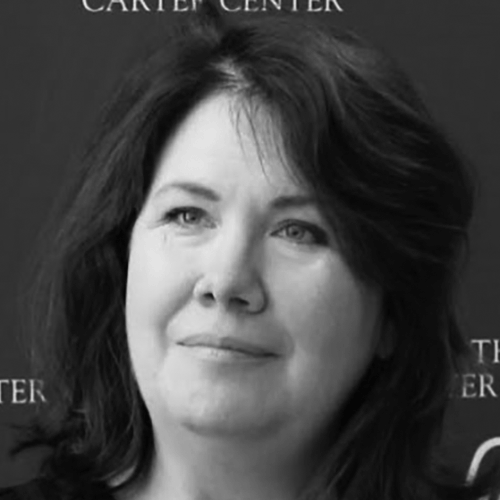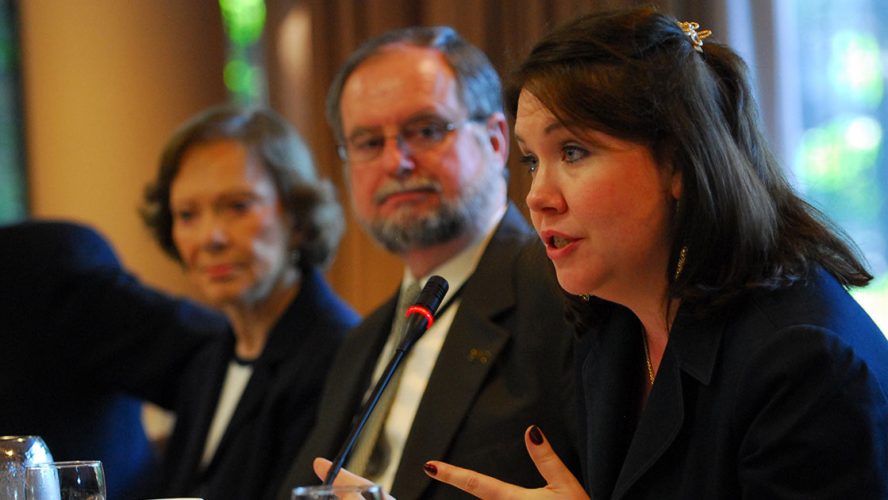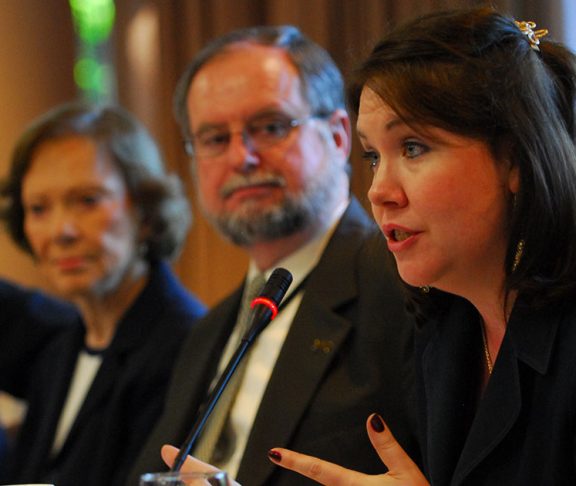Rebecca Palpant Shimkets from the Carter Center explains why the way we speak about mental illness in news and entertainment can shape how we think about mental health.

Rebecca Palpant Shimkets
Public Health Consultant at National Association of Chronic Disease Directors (NACDD)
Given the prevalence of mental illness — about 1-in-5 Americans will experience a mental illness this year — why are people still uncomfortable mentioning their condition to friends, family and employers?
Too many people fear being stigmatized or labeled with an illness that often is associated with long-held stereotypes that evoke alarm and dread. We consume sensationalized images depicting people with symptoms through all kinds of media, and they shape the way we think and treat people. Sadly, stigma and discrimination are the greatest barriers preventing people from accessing effective, and for some, lifesaving treatments.
What is the impact of unrecognized or undertreated mental illnesses?
Mental and substance use disorders can be serious — but are often preventable and treatable. Left untreated, they can result in low quality of life, disability and in some severe cases, suicide. Each year, almost as many people die by suicide than by all other violent intentional deaths combined.
The good news is that mental illnesses are preventable and treatable, and recovery is possible! Other benefits include, research that shows appropriate treatment of mental and substance use disorders produces cost savings for employers in terms of productivity, absenteeism, speed and quality of return to work after disability, and reduced turnover.
In what ways does the media (news and entertainment) perpetuate stigma or break down barriers related to mental illnesses?
Despite the best intentions, many journalists lack the time, resources and training to cover mental health stories in a balanced and sensitive way. A study found that 40 percent of newspaper stories linked mental illnesses to violence despite research stating only 3 to 5 percent of violent crimes are attributable to someone diagnosed with a serious mental illness. People with mental illnesses are more likely to be victims of violence than to commit violent acts.
Alternatively, media can share information about effective treatments, personal stories of recovery and expose the need for policy change. Organizations such as The Carter Center, Entertainment Industries Council, Scattergood Foundation and National Press Foundation through The Luv u Project are elevating the importance of accurate mental health coverage.
What are some specific tips from the Carter Center Journalism Resource Guide on Behavioral Health?
Language is important. Person first language, such as “Joe has schizophrenia” should be used, instead of “Joe is schizophrenic.” We would never say, “Joe is cancerous.” But for some reason it has been publicly acceptable to define an individual by their illness when mental illness or substance use is concerned. The guide encourages journalists to verify that a mental illness diagnosis is both accurate and relevant to the story.
How does The Rosalynn Carter Fellowships for Mental Health Journalism program reduce stigma?
We have the only year-long fellowship program for journalists exclusively on mental health, supporting them to produce stories that are accurate, sensitive and balanced. Because of these stories, we’ve seen positive changes occur including government attention to allocating millions of dollars in state legislature towards a mental health issue and a governor closing a hospital based on reporting of inhumane practices at the facility.
What can an individual do in his or her personal world to help reduce stigma?
It is important to talk candidly about mental illnesses when it is safe to do so. When you experience mental health problems, seek help and encourage your family and friends to do so. Your employer, school or faith community can have an awareness campaign that offers resources and information. Working together, we can defeat the stigma and discrimination surrounding this important public health issue.

